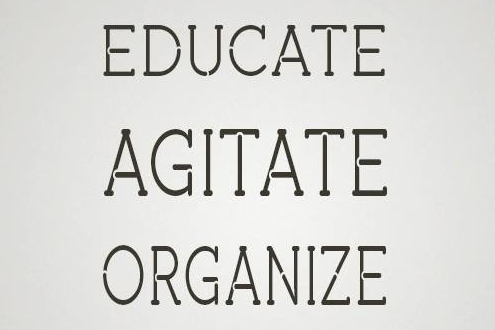
How to Turn Agitation into Organisation?
Babasaheb Ambedkar gave a trinity of principles for the social transformation: educate, agitate, and organise. Sometimes, there is a debate on the order in which they must be expressed, but education is always the first, and agitate and organise changing their positions. To the author, the debate over the sequencing is useless as the Trinity is the set of interdependent principles that must be practiced together and in the circumstances, the emphasis can change. It is said that Babasaheb Ambedkar found these values widely used by his teacher, John Dewey, in the Columbia University. Dewey is known for his educational philosophy, but not much is known about his agitational and organisational activities except his strong commitment to civil rights.
Education is important, and it is not just an academic education, but education or training that one cultivates through working with the problems of the world. The thinking is cultivated through actual working in and with the world. All those ideas which do not help the humanity, but are only wildly speculative must be rejected and the ideas that are “plan of action” for the transformation of the world must be cultivated. As such education as a social and democratic purpose. Not that new technical tools of analysis and methods that are tested in practice are not important, but what is important is the “intelligence” that uses what is available around to transform it to the higher possible level.
The current state of agitation among the followers of Babasaheb Ambedkar is due to a rising level of “education” among them. If they had only resorted the “classroom” education, they would not have agitated, but there is a much wider “classroom” available to them in terms of social movements, cultural movements, and political movements. This classroom enables them to think in a way to decide what is good for them and for others.
The community can mobilise and it can be mobilised all over India. There is no state in India where the followers of Babasaheb Ambedkar are not able to mobilise: Una in Gujarat, Saharanpur in UP, Maharashtra, mobilisation that followed after the heroic martyrdom of Rohith Vemula, and the list can be extended further. What is interesting is the way the Ambedkarite movements are interacting with other groups who are oppressed by the Brahminical system. It is clear that there cannot be a “single” organisation of the oppressed in India. It is impossible as the single organisation will itself be the solution to all the problems facing the oppressed Indians. Though it is not possible to have a single organisation, it is always possible to have an ideology that will permeate all the organisations which are fighting for justice.
That single ideology must be simple, must be easy to understand, and must be easy to practice so that it can be brought into play easily and should be able to replicate easily. The ideology must define what is its anti-ideology very sharply. The symbols of the ideology must be asserted and talked about widely and clearly.
The ideology is also a set of interrelated ideas and principles and therefore more simplicity in the expression of the ideas and principles is important. The ideology is anti-caste and by implication it is anti-Brahminism. It means the ideology must challenge the supremacy of the Brahmins to rule the Bahujans. The ideology must expose the Brahminical machinations and manipulations to keep the majority of Indians ignorant and it must express what is the practice of anti-Brahminism.
The ideological position of the Bahujans must be rooted in two basic values: non-violence and non-discrimination. The violence creates cycles of further violence. This does not mean that the force should not be used. Without force as an energy for transformation, nothing can be changed. The use of force and control over the force is important, as the Brahmins/Banias have not given voluntary control over their power which does not belong to them. Therefore, the power to force them to become more democratic and egalitarian must be generated. That is why power in the form of politics, culture, arts, media, and mobilisation is important. The principle of non-discrimination which means the principle of equality must be made the cornerstone of the ideological underpinning of the Bahujan movement. All those open to listening, work together, and fight together must have a chance to be a vehicle of the ideology: caste, religion, language, gender, place of birth cannot be a factor to mobilise the people.
The organisation does not mean the registered organisation, but the collected and organised voice and culture of people as well. The Brahmanical system organises the people on the basis of caste unconsciously through religion, myths, hatred, and divisiveness. This invisible Brahminical maze must be attacked from the several fronts and hence the organisational work which is seamlessly going on for a long time by the leaders of Non-Brahmin and anti-Brahmin leaders have started bearing fruits now.
One has to look around what is happening and find effective ways to reach out to the people through proper language and communication devices to make them understand the ideology of emancipation: this is the true hallmark of educated and trained mind and the way towards organising the larger mass of the people.
Author – Mangesh Dahiwale, Human Rights Activist



+ There are no comments
Add yours